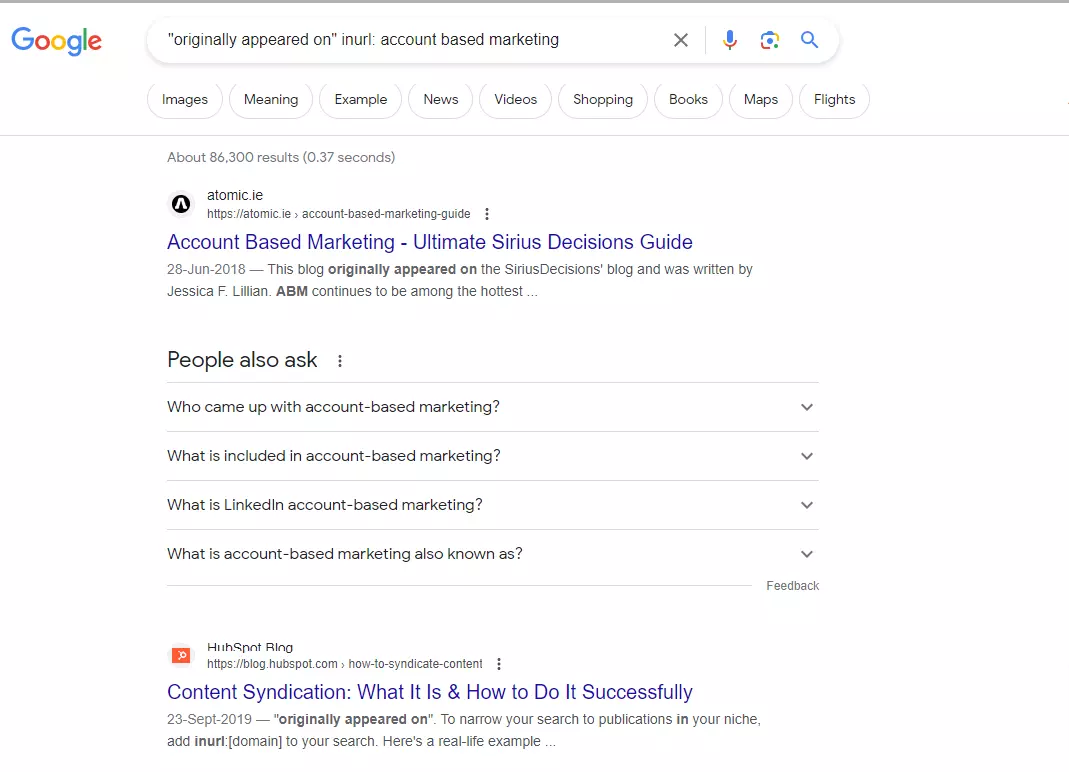
Introduction
Want to really boost sales of your SaaS software? Then listen up.
Content should be the most important asset in your B2B marketing strategy. It is the one resource that you can use on autopilot to effectively move prospects through the buyer’s journey, increasing your odds for top-of-funnel leads – and sales.
When executing a solid SaaS content marketing strategy and driving your KPIs, you have to find ways to stand out from the crowd constantly.
But with so much content out there and more being added every day, how can you reach your next potential new customers?
A perfect content syndication plan for your SaaS software is your answer.
What is Content Syndication?
Content syndication is a wonderful way to extend your reach and build relationships that may eventually turn you into customers. Whether they be blog posts, videos, infographics, landing pages, sales pages, and even support articles, all types of digital content can be syndicated.
Therefore, it is important to be as creative as possible and share your content across all platforms. If you are not doing so, you are leaving a ton of great opportunities on the table.

Image Source: Directive Consulting
Another obvious benefit of syndication for content marketers is that no new content is required to get started; you can simply republish what you currently have on your site!
How Does Content Syndication Differ for SaaS Software?
Unlike traditional companies, most SaaS software use content syndication to attract trial subscriptions or demo sign-ups. Thus, syndication provides a way for potential customers to get to know their product and converts trial leads into paying customers.
As competition in the SaaS (Software as a Service) market continues to grow, software users are less likely to make decisions based solely on features when deciding which software to use. Instead, they are more likely to choose software based on its brand, positioning, and content.
Additionally, many SaaS companies do not charge their users a one-time purchase fee. Instead, they rely on recurring revenue to survive. So, if a customer churns, that means they will soon stop paying their bills. To prevent this from happening, businesses must actively engage with their user base and maintain their current subscriptions.
You should look at syndication for SaaS software as more than just a way to acquire new customers. You should also be trying to keep those existing customers happy and upselling them to higher plans.
What Goes Into An Effective SaaS Content Syndication Strategy?
SaaS products are best sold through content, white paper reviews on websites, and digital marketplaces. So, when you are publishing them, it is crucial to understand how users will find you. This is an especially critical stage of SaaS marketing where you need to make sure you’re reaching the right people at the right time.
Here are some ways to promote your SaaS software quickly:
1. Establish Your Syndication Goals And KPIs
We’re always asking ourselves, ‘What is the return on investment? How can we measure the impact of what we’re doing?’ We try to present success in terms of number of forms filled out, downloads, conversions, and other website engagement.
To achieve just that, when laying the groundwork for your content syndication strategy, make sure you have answers to the following questions:
- Why are you syndicating? Define your key performance indicators (KPIs), targets, results, and growth metrics so that you can assess the impact of your content syndication.
- Who are your target readers? Do your homework. Think about your target audience and where they hang out online.
For example, if you’re writing content for healthcare decision-makers that use software solutions, look for online communities where these people are likely to engage in discussion.
- What to do next? Content syndication is a valuable tool for any SaaS software that wants to leverage content as its primary means of connecting with prospects and customers.
Make sure you’re directing the momentum you gain from syndication into new email subscribers, contacts, feedback, and positive customer feedback to improve your ROI.
2. Define Your Strategy
Here are three common ways to syndicate a common piece of content.
- Syndicating to a bigger site: Place your content on bigger websites with more web authority and credibility than you have. This will increase the online presence of your brand and attract new subscribers.
The biggest disadvantage with this strategy is that syndication isn’t under your control. Your audience can easily ignore your calls-to-action and click away or simply never click through to see the original article.
- Syndicating to a similar website: If you are targeting a niche market like the one for B2B SaaS software, you can make your content syndication efforts more focused.
You can choose bloggers who are similar to yourself by assessing their authority and audience as well as the kind of topics they cover. This will help you distribute your blog’s content in a way that can boost traffic and leads while providing value to your readers.
- Guest posting on a bigger site and syndicating later to your sites: When you’re guest blogging on a larger site (this could be in any industry, not strictly “SaaS”), you might want to post an original piece. This is an excellent opportunity to get your name out there by reposting on your own blog with a link added back to the original website.
Ready to take your content to new heights? Discover how we can elevate your content syndication game and help you achieve your marketing goals.

3. Define Your Goals and Metrics
The right approach to content syndication can help you attract and engage new customers for your products or services. To achieve this, you should develop measurable goals for your campaigns.
Content marketing in the SaaS software industry is slightly different from other marketing strategies. Just as your product’s KPIs change during the customer lifecycle, your all-in-one metrics will also change.
“When you know what to measure, you can take action and increase your content efforts’ effectiveness.”
Some key performance indicators (KPIs), such as the number of unique visitors, session duration, bounce rate, total page views, and average time on page, are standard for content marketing in any business.
Though your SaaS software can benefit from these KPIs, there are some significant ones that you should also consider:
- Free trial registrations: It can be separated to differentiate requests from certain pages on your site, such as your blog or resource guides.
- Requests for software demos: It can be separated in the same way.
- Customer acquisition cost (CAC): It is a metric that compares your marketing efforts to the number of clients you get for your money.
- Lead conversion rate (LCR): It is a metric that indicates how many conversions you get for each visit to your sites, such as email sign-ups or trial or demo registrations.
4. Find Relevant Content Syndication Platforms
Finding the right partners is a large part of running a successful SaaS software. You want your product content, features, and benefits to appear on authoritative websites. And they should reach the people most likely to be interested in learning about how these features can help solve their problems.
You can find a variety of sites that help with syndicating blog content and generating new connections with industry writers. These sites will ultimately help you find the most relevant partners for your business and advance your syndication strategy.
Take the time to research any website before reaching out — knowing their vertical, audience, and style will help shape your pitch.
5. Learn About Various Syndication Methods
You can use any of the following methods to publish your content on other sites, including blog posts, articles, videos, photos, and podcasts:
- Free Services– Platforms like WikiHow, HubPages, and other syndication sites allow you to submit your content for free. They also help you generate traffic to your site and expand your online presence.
- Paid Services– Paid content syndication is when you pay to publish your content on various networks. A list of recommended articles is visible on the site. When readers click on those widgets, they are directed to your content.
- Partnerships – It’s simple. You and your partner websites, which should be top-ranking in their respective niches, agree to publish your content or feature your original content once or regularly.
- Ad-Supported– You could look into becoming a content contributor for a syndication service. You will be rewarded for your best pieces of writing by receiving a slice of the advertising revenue that your articles generate.
- Licenses – This strategy, referred to as licensed blog syndication, allows you to make money in the form of royalties whenever “high-quality” readers access your content.
Find the Right Content Syndication Partner for Your Saas Software
One of the best ways to find the right content syndication partner for free is by performing a simple Google search. Look for articles that mention phrases like:
- “originally appeared on”
- “republished with permission”
- “originally published in”
Add inurl:[domain] to your search to limit your search results in your niche. Here’s an example of an account-based marketing blog that syndicates content.

Image Source: Google
When choosing platforms, aim for those that include the following:
- a blog with a similar or higher authority than yours
- an audience that resembles your target market
- original article canonical links
Avoid platforms with low authority and spammy outbound links. Also, if you don’t find any editorial guidelines, that’s a clear no-no.
Some examples of free platforms include Medium,
Quora, LinkedIn, SlideShare, Reddit, Business2Community.
Most SaaS software businesses also opt to grow and connect with potential leads through paid content distribution. However, brands with limited budgets have traditionally had to look for an alternative way to get their content visible in front of a big audience.
That’s not the case today. There are tools like Taboola that make it possible for smaller brands to reach their audience faster and display their content as sponsored links.
These platforms work much like PPC campaigns. You are charged a fee each time a reader clicks on one of these ads, which varies depending on the target readers and other campaign settings.
Some examples of paid platforms include Outbrain, Zemanta, Sharethrough, Content.ad, RevContent.
The Downside of Content Syndication for Your SaaS Software
While it’s one of the biggest advantages of web content syndication, duplicate content issues are also one of the biggest disadvantages.
“When you syndicate your blogs on other sites, Google’s algorithms will pick the version they think is best for users—which may or may not be the version you like.”
Because you have no authority over which version Google chooses, your original content will likely be outranked. If the syndicated posts are high-converting, things can grow even worse.
You can do two things to avoid it, though:
- rel=canonical tag: When you use the rel=canonical tag on a post, you’re telling Google where the content originated. In the event of duplicate content, the tag will help Google to identify which version to display.
- NoIndex: If you’re interested in preventing your post from showing up on search engines, there is a tag “NoIndex” that you can add to a blog post on your SaaS software. This will tell Google that your post should not be indexed.
Get Maximum Exposure for Your SaaS Software
Well-written content is pointless without massive exposure. Every marketer realizes this, but with all the work that goes into creating great content, there isn’t much time left to share it. That’s why you need to focus on getting your content in front of as many eyeballs as possible.
Having said that, content marketing for SaaS companies involves more than just hitting the publish button and hoping for the best. Setting up a syndication strategy for your SaaS software can seem like a daunting task, especially if it’s your first time doing it.
But if you have the right partners and the right content, you will be able to carry out your strategy effectively.
Is there anything else that we skipped?
Our blog
Latest blog posts
Tool and strategies modern teams need to help their companies grow.

Marketers often confuse drips vs nurtures, but each plays a distinct role in B2B emai...

This article explores the key differences between enterprise sales vs SMB sales, high...

AI in B2B marketing, future of B2B marketing, ai in marketing, ai in marketing automa...






